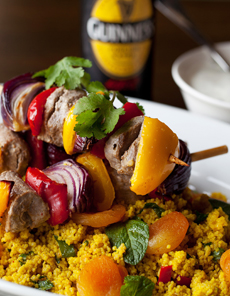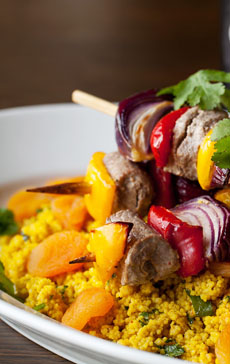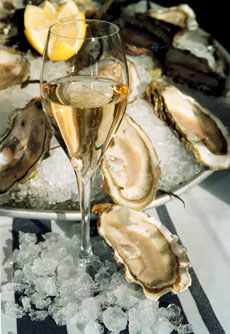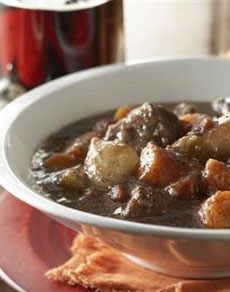|
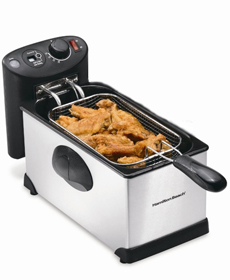
A deep fryer from Hamilton Beach, with
temperature controls to prevent burning.
|
|
If you’re wary of frying foods because you’ve burned them, you may simply need to switch your oil—or use a cooking thermometer (you need a candy and deep fry thermometer) or deep fryer.
Proper frying, says chef Louis Eguaras, takes place between 350° and 375°F.
Monitor the temperature of the oil with the thermometer:
If the fat is too hot, you will both burn the food and ruin the oil.
If the temperature is too low, the food will take too long to cook and will absorb too much oil, making it greasy.
While frying can use any number of oils, deep frying specifically needs a high smoke point oil, such as canola, grapeseed, peanut, safflower and soybean oils. (See the smoke points of the different fats.)
|
The Difference Between Sautéing, Frying and Deep Frying
Sauté: Sautéing places the food atop a thin layer of fat in a shallow pan. Ingredients are often cut into pieces, thinly sliced or pounded flat to facilitate fast cooking over a relatively high heat, typically tossed for even cooking. Sautéing browns the food: When chicken, fish or meat is removed, the residue stuck to the pan can be deglazed* with wine or stock to make a sauce.
Pan Fry: Pan-frying is similar to sautéing, but with slightly more fat and a slightly lower temperature. It is used to cook larger pieces of meat or fish that need more time to cook through. The meat is often finished in the oven after its surface has been cooked to the desired degree. And, because of the size of the pieces, the food isn’t tossed.
Fry or Shallow Fry: This technique, used to prepare patties and portion-size cuts of meat and fish, submerges the food one-third to one-half deep in the fat. Battered foods such as fried chicken and fritters are made this way. Shallow frying is an oil-based cooking technique.
Deep Fry: The food is totally immersed in hot oil, in a deep frying pan or an even deeper pot called a deep fryer. Doughnuts and french fries are fried this way, and it’s an easy way to fry battered foods as well.
Stir-Fry: Like sautéing, stir frying uses a thin layer of fat; but the food is fried quickly in a wok at a very high temperature, with continuous stirring to prevent it from adhering to the wok and burning.
*When a piece of meat is sautéed, pan fried or roasted, a deposit of caramelized sugars, carbohydrates, and/or proteins forms on the bottom of the pan. The French culinary terms for these deposits is fond (meaning “bottom”) or sucs (pronounced seuk), from the French word for sugar, sucre. To deglaze, the fat rendered from cooking is poured from the pan and a clear liquid† of choice is added and tossed with the fond.
†Options include beer, brandy/Cognac, broth or stock (beef, chicken, fish, vegetable), fruit juice, vinegar, red or white wine.
|
